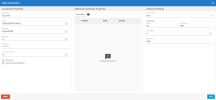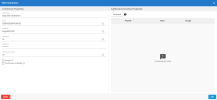Configuring the Connections
Prior to configuring the source and destinations connections in DataSync, you need the following:
- A version of Sage 300 supported by Sage
- A destination database (preferably, in the same collation as your Sage 300 Database)
- A valid version of DataSync (refer to Installing DataSync for more information)
If you are using Nectari Cloud, credentials are sent to you when the cloud provisioning is done.
Configuring the Source Connection(s)
You need to create source connections that will be used for refreshing the data (for tables that can be loaded incrementally). For a consolidation, you need to create one source connection per company. For a synchronization, only one source connection is required.
To create the source connection:
- In DataSync, create a new source connection.
- In the list, select SQL Server or Oracle.
- In the Connection Properties panel:
- In the Description field, enter a name for this connection. For a consolidation, you may want to use the company name.
- Enter the Server and Database names.
- For the Username and Password fields, enter the Sage 300 database credentials.
-
In the Additional Settings panel, set the Tracking Type to Date.
ImportantThe time zone has to be set to the Sage 300 application server time.
-
Click Save.
-
For a consolidation, repeat these steps for each company. You can click the Duplicate Connection icon located on the upper right hand corner and make the necessary updates.
Configuring the Destination Connection
You need to create a destination connection for the Sage 300 Data Warehouse. This connection will receive data from the source connection(s).
To create the Data Warehouse destination connection:
- In DataSync, create a new destination connection.
-
Depending on your installation scenario, perform one of the following actions:
-
If you will be replicating data from a data warehouse (scenario 2), select SQL Server or Oracle, depending on where the Nectari data warehouse is located.
-
If you will be using Nectari in the Cloud (scenario 4), select Azure.
-
-
In the Connection Properties panel:
-
In the Description field, enter Data Warehouse as the name for this connection.
-
Enter the name of the server on which the database is installed.
-
Enter the name of the database to connect to.
-
Enter the user name and password. For a Cloud installation (Nectari Cloud), use the credentials that were sent to you.
-
-
Click Save.

